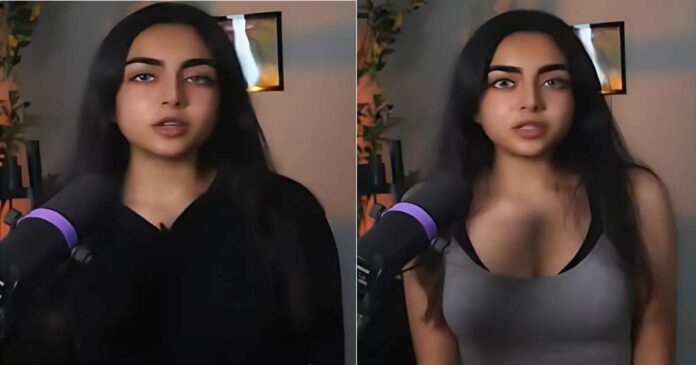
A new social media experiment has been developed by social media influencer Zara Dar, a former supporter of women in science and technology who gave up her PhD studies to work as an OnlyFans model. The results of a test Dar ran that she’s dubbed the “tank-top effect” are providing fresh insight into the erratic realm of online algorithms.
Dar just published the results of a straightforward yet enlightening A/B test (split testing). She made two short videos that were exactly the same except for her clothing: she wore a tank top in one and a regular top in the other. The preliminary findings were impressive, but it is acknowledged that additional research is required to make generalisations.
Engagement with the tank top video increased significantly across two key platforms. Views more than doubled on X (previously Twitter) and increased by up to 28% on Instagram. On YouTube, though, the same film did poorly and witnessed a decline in views.
Dar, a recent PhD graduate who currently works as a freelance researcher and content developer, offered his thoughts on the surprising result. The inconsistent outcomes across platforms imply that every algorithm has an own set of guidelines for promoting material, many of which are ambiguous.
The “tank-top effect” draws attention to the constant difficulty authors have comprehending and negotiating the intricate world of social media algorithms. There is no one-size-fits-all approach to achieving success with online pageviews, since some platforms appear to penalise some types of visual content while favouring others.
Who is Zara Dar?
Zara Dar, an engineer and YouTuber from Texas, USA, used to make difficult STEM subjects understandable on her channel. She left academics to focus on content creation full-time, especially for the subscription-based platform OnlyFans, even though she was earning a PhD. She made headlines last December when she disclosed that she made more than $1 million (more than 8.7 crore) on the app.
Why this matters for content creators?
Zara’s widely shared LinkedIn post soon became a topic of discussion among creators, igniting discussions about algorithm prejudice, engagement hacks, and content virality.
The Tank-Top Effect viral test demonstrates the unpredictability of algorithms. YouTube seems to favour the more subdued version, while Instagram and X rewarded the “bolder” video. This has demonstrated that there is no one-size-fits-all method for becoming viral on multiple platforms. Each has a distinct user base that rewards and reacts differently to various aesthetics for the same content.
For creators navigating the congested digital arena, Zara’s experiment demonstrates that platform algorithms, audience psychology, and presentation can all tip the scales between an average post and a viral one, as she herself stated: “Not to generalise, of course.”
